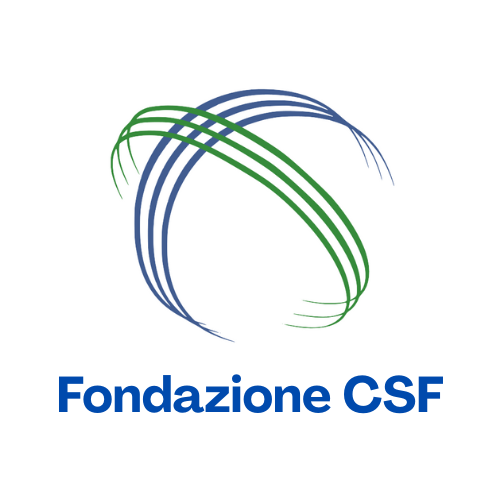Olimpia Fontana and Simone Vannuccini / 11 May 2023
Commentary no. 261
Industrial policy is back! What the International Monetary Fund has labelled “the policy that shall not be named” is now making a comeback in different parts of the world, including the European Union (EU). Until now, industrial policy in the EU always had a national dimension, or has been limited to guaranteeing the ‘framework conditions’, while at the Community level competition and trade policies have prevailed. For the EU, the reasons for this change are mainly due to a more assertive attitude in an international geopolitical context dominated by the antagonism between China and the United States and by repeated destabilising crises. The European Commission has recently promoted the idea of a European industrial policy financed by common resources, through the creation of a European Sovereignty Fund (ESF). The objective is twofold: to send a signal to the world regarding the economic and technological leadership position that the EU aspires to maintain in international markets; and to counter unfair competition, the race for subsidies and the flight of companies overseas, especially after the launch of the US Inflation Reduction Act (IRA).
The debate on industrial policy at the EU occurs at regular intervals. Already in 2014, there was talk of an ‘industrial renaissance’ and the goal of increasing the share of industrial production to 20 per cent of the EU’s GDP. In March 2020, the Commission launched the New Industrial Strategy for Europe, but the pandemic highlighted the technological and industrial vulnerabilities and dependencies of the European economic system and, therefore, the need for direct interventions to support specific sectors. The recognition of the EU’s strategic dependencies emerged even more clearly with the war in Ukraine. The decision to emancipate itself from energy sources originating from Russia has pushed the EU further towards the search for ‘strategic autonomy’, understood as “the ability to act autonomously as well as to choose when, in which area, and if, to act with like-minded partners.” Although betting on an open strategic autonomy risks echoing American neo-protectionism, the new European industrial policy must be based on the need to ensure internal coherence and resilience of an economic system that can rely less and less on a full globalisation of value chains.
This change of pace is historic, considering that – as mentioned – industrial policy in the EU is crafted and implemented at the national level and has a rather limited scope. State aid, in fact, goes against the smooth functioning of the single market (which is the cornerstone of European economic integration), as it distorts the level playing field between companies located in different Member States. For this reason, competition policy has always been an exclusive competence of the EU, aimed at reducing public interventions. While national industrial policies have been subject to European State aid rules, there have been no corresponding dedicated funds for European industry at the Community level, partly due to the small size of the European budget. This idea is emerging now, thanks to the proposal to create an ESF.
The ESF proposal is contained in the Green Deal Industrial Plan for the Net-Zero Age, launched to strengthen European industrial competitiveness in view of the ecological transition in the current global context. At present, there is a race to compete internationally in clean tech, which on the one hand can bring environmental benefits, but on the other, it can have distorting effects on the market. Industrial policy initiatives such as those of China in its 14th five-year plan, which aims to increase the share of strategic emerging industries from 11.5% of GDP in 2019 to over 17% by 2025, or of the USA’s IRA, which is providing €330 billion in subsidies for reshoring in the clean tech sector, are pushing the EU to adopt counter-measures. This is the driving force behind the European Chips Act aimed at the semiconductor sector, in response to the USA’s Chips and Science Act launched in 2022.
In order to boost the investments needed for the green transition, the Commission is proposing a further relaxation of State aid rules, following the change already initiated to address the pandemic and the energy crisis. The Temporary Crisis and Transition Framework will be bound by the requirements of the green transition. To mitigate the risk of imbalances among Member States with different fiscal capacities, there are already several instruments that combine the goal of decarbonisation with that of convergence: the Recovery and Resilience Facility (updated with the RePowerEU chapter), Horizon Europe, InvestEU, cohesion policy instruments, European Investment Bank loans. In addition to these, the Commission is exploring the possibility of increasing funding at the European level with the aim of maintaining – within the framework of the Green Deal Industrial Plan – “a European edge on critical and emerging technologies relevant to the green and digital transitions, from computing-related technologies, including microelectronics, quantum computing, and artificial intelligence, to biotechnology and biomanufacturing and net-zero technologies”. As far as projects are concerned, the reference would be the IPCEIs (Important Projects of Common European Interest), industrial collaboration initiatives between companies located in different Member States. While until now national governments have supported such projects thanks to the relaxation of State aid rules, the ESF proposal intends to make new resources available at the European level.
The ESF can become the ‘institutional vehicle’ to support continental industry. At this stage, two ‘architectural’ issues remain. One issue concerns the source(s) of the financial resources for the ESF, also in light of the actual investment needs for the Net-zero Industrial Plan. After the experience of the €750 billion common European debt issue for Next Generation EU (NGEU), European Commissioners Paolo Gentiloni and Thierry Breton stressed the need to compensate for the inability of some Member States to spend public money with new forms of European solidarity (in practice, new common debt) to respond to crises and preserve the single market. This position was later revised by Breton himself in light of the NGEU resources still to be spent, thus denying the possibility of issuing new common debt. The second issue concerns the intervention priorities to be included in the expenditure items of the ESF. Enabling technologies related to the green and digital transition will have to be the priority, especially key inputs such as semiconductors and batteries which are the basis of various production chains, not just high-tech ones.
In general, it will be important to clarify whether the EU wants a specialised agency tasked with supporting the development of frontier technologies (similar to ARPA/DARPA agencies in the United States, Sprind in Germany, and ARIA in the UK), or an institution with a broader scope – a proper public investment fund dedicated to interventions in strategic assets. In any case, in a global context that is increasingly tense and competitive and less interdependent, European policy makers can no longer postpone the implementation of a European industrial policy that finally goes beyond grand declarations of principle.
*Olimpia Fontana is Mario Albertini Fellow of the Centro Studi sul Federalismo; Simone Vannuccini is Professor of Economics of Artificial Intelligence and Innovation at Université Côte d'Azur, Nice (France)
Download PDF - Commentary no. 261

 En
En  It
It 



